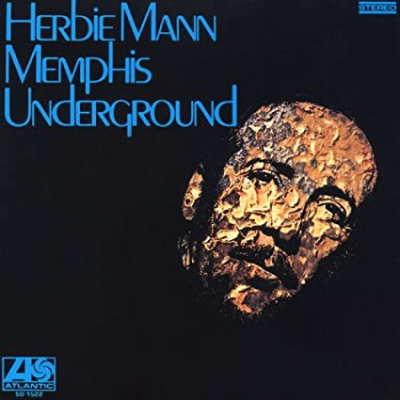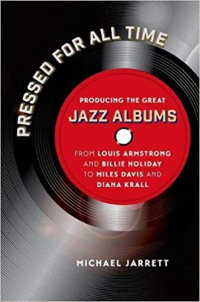.
.
Drawn from interviews with prominent producers, engineers, and record label executives, Michael Jarrett’s Pressed For All Time: Producing the Great Jazz Albums is filled with interesting stories behind some of jazz music’s most historic, influential, and popular recordings. In cooperation with Jarrett and University of North Carolina Press, Jerry Jazz Musician will occasionally publish a noteworthy excerpt from the book.
.
In this edition, producer Tom Dowd talks with Jarrett about the genesis of Herbie Mann’s 1969 recording, Memphis Underground, and the executives and musicians involved
.
.
.
.
A celebrated popular music engineer for many years, Tom Dowd recorded many of Atlantic Records’ jazz titles, as well some of the rock era’s most iconic artists, including Eric Clapton, Lynyrd Skynyrd, Allman Brothers, J. Geils, and the Eagles. He was inducted into the Rock and Roll Hall of Fame in 2012.
.
___
.
…..By then, I’d known Herbie Mann for thirty years. The first time I ever recorded him it was for Bethlehem Records when he was playing tenor sax. That’s when I met him. Then he signed with Atlantic and did a couple things with Nesuhi Ertegun [producing]. Herbie and I got tighter after Comin’ Home Baby! [1962], his live album. By the late sixties, I was in and out of Memphis. Herbie and I talked about King Curtis, Duane [Allman], and all of those people. He asked “What would it be like if I recorded down there?”
…..“You’d have a ball,” I told him. “The guitar player [Reggie Young] and the bass player [Tommy Cogbill] are both really jazz sensitive. You’d like them both.”
…..I don’t know whether Herbie consulted Nesuhi, Ahmet [Ertegun], Jerry [Wexler], or Herb [Abramson], but they decided: “All right, Dowd. Take Herbie down to Memphis and see what you can do.” I figured it would at least be interesting because it would give the two musicians that I mentioned a chance to do a little more jazz than what they were stuck doing in Memphis sessions, and the rest of the band [the studio players at American Sound Studio] was more than adequate.
…..Then Herbie came along and said, “I’ve got this upright bass player, Miroslav {Vitous], that I’m bringing along.” Cogbill played a Fender. And he added, “I’m also bringing along [guitarist] Sonny Sharrock.” I realized, “This is going to be pretty crazy.”
…..We got in the studio and, after a day or so of jamming and running through one or two obvious songs, it was only a matter of how sophisticated Herbie wanted to be in dictating or requesting their participation in some of the things he wanted to do. By then, it probably didn’t take more than a work week until we were up and gone.
…..That group of Memphis musicians was very traditional, which is not a reflection on them but a way to describe how that studio operated. In those days, there were nail-polish marks on the rotators. “This is where the bass is. If the needle gets to the red mark, it’s too loud. Tell him to turn it down.”
…..Gene Chrisman, Bobby Emmons, Bobby Wood, Tommy and Reggie all sat in the same place. It was like going to the same desk every day when you’re working in an insurance-company office or a bank. They each had a place, and they had earphones. They’d sit there. One might look at the other and say, “You playing louder today?” There was that kind of communication thing among them.
…..They were very even-tempered and skilled. When we came in, my biggest concern was where will I put Herbie so that they can all see and hear him? When Herbie threw in Sonny and Miroslav, my first task was to get things going with Herbie. When it moved up to five pieces as we added ingredients, I made the adjustments necessary for what we were adding. But I wouldn’t disturb the local guys because, if I did that, it destroyed whatever we were going for. I didn’t want to disrupt the tribe.
.
*
.
Listen to Herbie Mann play “Memphis Underground”….Personnel on the 1969 recording:
Organ: Bobby Emmons Piano: Bobby Wood Drums: Gene Christman Flute: Herbie Mann Guitar: Larry Coryell Guitar: Reggie Young Vibraphone: Roy Ayers Guitar: Sonny Sharrock Engineer, Producer: Tom Dowd Composer: Herbie Mann
.
.
.
.
.
_____
.
.
From Pressed for All Time: Producing the Great Jazz Albums from Louis Armstrong and Billie Holiday to Miles Davis and Diana Krall. Copyright © 2016 by Michael Jarrett. Published by the University of North Carolina Press. Used by permission of the publisher. www.uncpress.unc.edu
.
.
___
.
.
photo by Pamela Jarrett

Most of Michael Jarrett’s writing on jazz production appeared in Pulse!, Tower Records’ magazine. His day job, however, was professor of English at Penn State University (York Campus). In addition to .Pressed for All Time, his book about jazz record production, Jarrett wrote. Drifting on a Read: Jazz as a Model for Writing; .Sound Tracks: A Musical ABC; and .Producing Country: The Inside Story of the Great Recordings. He is now retired. He and his wife live in the village of Ojochal, on the southern Pacific coast of Costa Rica.
.
.
.






























